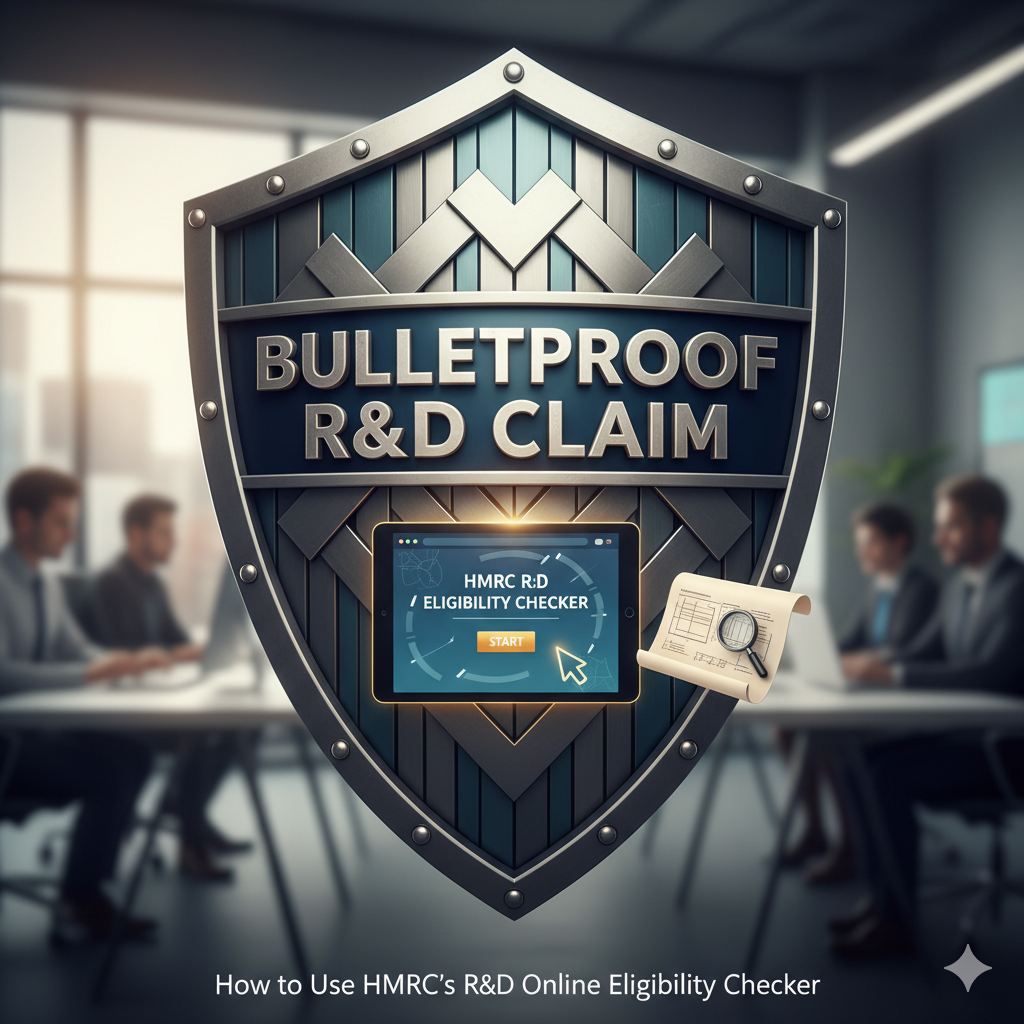What Counts as R&D in 2025? A Founder’s Guide to Qualifying Innovation

Written by:
Daniel Scott
Partner & Head of Accounting
What Counts as R&D in 2025? A Founder’s Guide to Qualifying Innovation
Innovation is everywhere at the moment. Every founder talks about it, every investor expects it, and HMRC rewards it through R&D Tax Relief. Yet, in 2025, the question “what actually counts as R&D?” is tripping up thousands of startups.
This guide sets out what HMRC really means by research and development, how the new merged R&D scheme changes things from April 2024, and what you should be doing to build a claim that stands up to scrutiny.
Why R&D Tax Relief Matters
For growing tech and SaaS companies, R&D Tax Relief can be the difference between a short runway and long-term sustainability. It turns innovation costs into a tangible cash benefit. According to HMRC’s September 2025 statistics, UK companies claimed £46.7 billion of qualifying R&D expenditure in 2022-23. The number of SME claims fell by more than 20 percent and HMRC now estimates that around one in seven claims contain errors.
That tells us two things. The incentive is still huge, but HMRC is taking a tougher stance on evidence and eligibility. The opportunity remains, but you need to get it right.
Understanding HMRC’s Definition of R&D
HMRC defines qualifying R&D as a project that aims to achieve an advance in science or technology and seeks to resolve scientific or technological uncertainty. In simpler terms, your team must be trying to do something that was not readily achievable at the start and where a competent professional in your field could not easily find the answer.
If your engineers are building new algorithms, experimenting with machine-learning models, integrating complex APIs, or tackling difficult design constraints, there is a good chance that qualifies. The critical point is that you must describe the uncertainty and how you tried to overcome it. HMRC is not interested in how profitable your project was; they want to see that you genuinely pushed technical boundaries.
What Usually Does Not Qualify
Plenty of impressive work still falls outside the scheme. HMRC continues to exclude activities that are purely commercial, aesthetic, or routine. Marketing research, user-interface tweaks, or refactoring code without any technical challenge are not R&D. Neither are tasks where the outcome is already known.
Work carried out overseas is also restricted. Under the current merged R&D scheme, most overseas subcontractor and externally provided worker costs no longer qualify unless you can show specific exceptions, such as a requirement to perform the work abroad because of physical or legal constraints. It is also important to note that only one party in the contractual chain can claim for a particular piece of work, and that will usually be the company that commissions and controls the development.
What Has Changed Since April 2024
The New Merged R&D Scheme
From April 2024 the SME and RDEC schemes were combined into a single R&D Expenditure Credit model. Almost all companies now claim through the same process. The new structure provides an above-the-line credit of 20 percent, which after corporation tax delivers an effective benefit of roughly 15 to 16 percent.
For loss-making startups with very high research intensity, HMRC has introduced Enhanced R&D Intensive Support. If at least 30 percent of your total company expenditure relates to R&D, you may qualify for a higher relief rate even if you are not yet profitable. This is designed to help deeply innovative companies that are still in their development phase.
Subcontracting and Overseas Work
The biggest shift is in how HMRC treats subcontracted and overseas work. If you subcontract development to another company, only one party can claim the costs, and in most cases that is the business commissioning and controlling the work. When work is performed outside the UK, those costs are generally excluded unless there is a genuine and unavoidable reason the work had to take place overseas.
This means founders must map out their R&D supply chain carefully. Know who is doing the work, where they are doing it, and under what contract terms. Keep written evidence that you own the IP and that you manage the direction of the technical work.
Subsidised or Grant-Funded Projects
Another change worth noting is how the merged scheme deals with subsidies and grants. In the old SME scheme, any subsidised R&D could be disqualified. Under the new merged system, HMRC takes a more flexible view. Projects that receive grant funding can still qualify, but you must disclose the source and type of funding and identify which costs are covered by the grant.
How to Structure and Record Your R&D Projects
The key to a defensible claim is structure and documentation. Think of every piece of development as a mini-experiment. Break your project into clear phases with defined objectives, challenges, and technical hurdles. Capture what you tried, what failed, and what finally worked.
Keep detailed records:
- project logs or sprint notes showing technical problems tackled
- code versions or prototype iterations with comments explaining what changed
- time records linking staff to specific R&D work
- notes or diagrams from the competent professional overseeing the work
If you engage subcontractors, keep the contracts and statements of work that show you controlled the direction and retained the risks. HMRC values contemporaneous evidence far more than retrospective summaries.
Frequently Asked Questions
Do overseas costs ever qualify?
Usually not, but if the work could only be performed abroad due to environmental or regulatory factors, you can include it. You will need to justify that exception clearly.
What is the Enhanced R&D Intensive Support scheme?
It is a separate benefit for loss-making companies where at least 30 percent of total expenditure is R&D. It allows a higher payable credit, designed to keep innovation moving even before profitability.
Can projects supported by Innovate UK or similar grants still claim?
Yes. Under the merged scheme, subsidised projects are no longer automatically excluded. You must disclose the funding and apportion the costs properly, but claims remain possible.
When do the new rules apply?
They apply to accounting periods beginning on or after 1 April 2024. If your year-end is December, you will first apply the merged scheme for your 2025 return.
Why This Episode Matters
Correctly defining R&D is the foundation of every successful claim. Misunderstanding what qualifies leads to disallowed costs, wasted time, and in some cases HMRC enquiries that drag on for months. When you know the criteria and build your evidence as you go, you protect your company and make future claims faster and safer.
Ready to Review Your R&D Projects?
Book a Free 30-Minute Consultation
Email info@onthegoaccountants.co.uk to arrange a short call. We will review your projects, highlight potential eligibility, and explain what records to start keeping so your next claim is simple and defensible.





